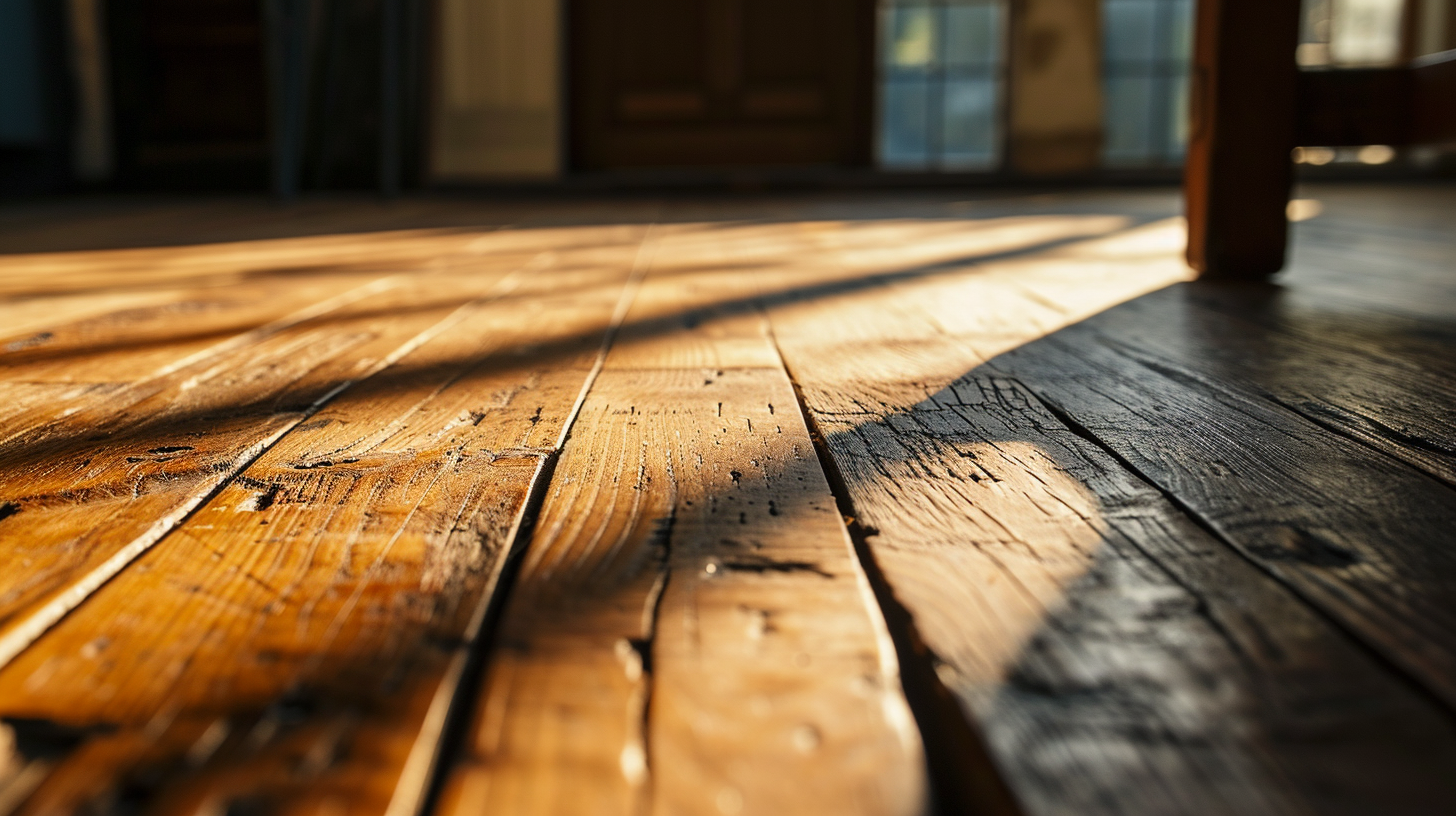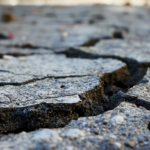Last Updated on 26th December 2023
Welcome to our comprehensive guide on how to repair a squeaky floor. Whether you’re dealing with hardwood, laminate, or stairs, this article will provide you with the knowledge and techniques to eliminate those pesky squeaks. We will walk you through the step-by-step process of identifying the cause, gathering the necessary tools, and executing the repair effectively. Additionally, we’ll provide tips on preventing future squeaks and maintaining the longevity of your floor. Let’s get started on restoring peace and quiet to your home.
Identifying the Cause of the Squeak
In order to successfully resolve the issue, it is essential to accurately pinpoint the specific location of the squeak in the floor, as this concrete detail will guide the subsequent repair process. Identifying common causes of floor squeaks can be a challenging task, but with proper troubleshooting techniques, it can be accomplished effectively. One common cause of squeaky floors is loose floorboards. Over time, the constant foot traffic and natural shifting of the house can cause the nails or screws holding the floorboards in place to become loose. Another potential cause is the presence of gaps between the subfloor and the floorboards. These gaps can result from the natural expansion and contraction of the wood due to changes in humidity levels. By thoroughly examining the floor and using techniques such as stepping on different areas to locate the squeak, homeowners can accurately determine the cause of the squeak and proceed with the appropriate repairs.
Gathering the Necessary Tools and Materials
To effectively gather the necessary tools and materials, homeowners should compile a comprehensive list of items needed for repairing the squeaky floor, including a hammer, nails, screws, drill, wood filler, pry bar, and a level. Preparing materials is an essential step in troubleshooting techniques for fixing a squeaky floor. Before starting the repair process, it is crucial to ensure that all required tools and materials are readily available. A hammer is necessary for driving nails or screws into the floorboards to secure them. The drill is useful for pilot holes and screw installation. Wood filler is used to fill any gaps or cracks in the floorboards, providing stability and reducing the squeaking noise. A pry bar is needed for lifting floorboards, allowing access to the subfloor for further repairs if necessary. And finally, a level is essential for ensuring that the floorboards are correctly aligned and level after the repair is complete. By gathering these tools and materials, homeowners can effectively troubleshoot and repair their squeaky floors.
Preparing the Floor for Repair
A thorough inspection and assessment of the floor’s condition, along with a careful removal of any furniture or obstacles, are crucial steps in preparing the floor for repair. Dealing with uneven subfloors can pose a challenge during the repair process. It is important to identify and address any underlying issues that may be causing the unevenness, such as moisture or structural problems. Once the subfloor has been properly leveled and secured, the repair work can begin. It is advisable to obtain a floor repair cost estimation before proceeding, as this will help in budgeting and planning for the repairs. Factors such as the size of the affected area, the type of flooring material, and the extent of damage will all contribute to the overall cost. By properly preparing the floor and estimating the repair cost, homeowners can ensure a successful and cost-effective repair process.
Fixing Squeaks in Hardwood Floors
Squeaks in hardwood floors can be quite bothersome, but fortunately, there are effective methods to fix them. The main causes of floor squeaks are loose floorboards and friction between the boards and subfloor. To repair squeaky floors, you can use techniques such as re-nailing the boards, lubricating the joints, or using specialized squeak-reducing products.
Causes of Floor Squeaks
One common cause of floor squeaks is the shifting of subfloor joists over time, which can be addressed by reinforcing the floor structure. Identifying common causes of floor squeaks is crucial in troubleshooting techniques for repairing them effectively. Other causes may include loose floorboards, inadequate nailing, or gaps between the subfloor and the floor covering. To identify the cause of the squeaks, it is necessary to inspect the floor carefully, looking for any visible signs of damage or movement. Once the cause has been identified, appropriate repair techniques can be applied. Reinforcing the floor structure by adding additional support, such as bridging or blocking between the joists, can help eliminate the squeaks. Additionally, using screws to secure loose floorboards or filling gaps with adhesive can also be effective in reducing floor squeaks. Overall, understanding the common causes of floor squeaks and applying appropriate troubleshooting techniques is essential for a successful repair.
Effective Repair Methods
Identifying the underlying cause and implementing targeted reinforcement techniques is crucial for effectively repairing squeaks in hardwood floors. When it comes to fixing tile squeaks, one common cause is a loose subfloor. To secure the subfloor and eliminate the squeaks, it is important to locate the loose areas and add screws or nails to firmly attach the subfloor to the floor joists. Another effective method is to use adhesive to secure the tiles to the subfloor. This helps prevent movement and eliminates the squeaks caused by loose tiles. Additionally, using a floor repair kit, which typically includes specialized screws and a guide, can provide a long-lasting solution to fix squeaky floors. By addressing the underlying cause and utilizing targeted reinforcement techniques, it is possible to effectively repair squeaks in hardwood floors and enjoy a quiet and stable floor.
Repairing Squeaks in Laminate Flooring
Laminate flooring repairs can effectively address and eliminate persistent squeaks, improving the overall stability and functionality of the flooring surface. When it comes to repairing laminate flooring and troubleshooting squeaks, there are a few key steps to follow. First, identify the source of the squeak by walking on the floor and listening for any creaking or popping sounds. Once the problem area is identified, determine if the issue lies with the subfloor or the laminate planks themselves. If it’s the subfloor, adding shims or screws to secure it may solve the problem. If it’s the laminate planks, applying adhesive between the planks or using a lubricant like graphite powder can help reduce friction and eliminate the squeak. Regular maintenance and prompt repairs are essential to keep laminate flooring in optimal condition and ensure a quiet and stable surface.
Addressing Squeaks in Carpeted Floors
Carpeted floors can develop squeaks over time due to various factors such as loose subflooring or shifting carpet padding. To address these squeaks, it is important to identify the root cause and implement effective repair methods. Additionally, taking preventive measures like using carpet adhesive or installing additional support can help ensure a squeak-free carpeted floor in the future.
Causes of Floor Squeaks
The most common cause of floor squeaks in carpeted areas is a loose or damaged subfloor. Identifying the common causes of floor squeaks is essential for troubleshooting and resolving the issue effectively. In addition to a loose or damaged subfloor, other causes may include loose nails, improper installation, or excessive moisture. To troubleshoot floor squeaks, start by locating the source of the noise. Walk around the room and listen for the squeaks. Once identified, the next step is to fix the problem. This may involve securing loose subflooring, tightening loose nails, or addressing any moisture issues. It is important to address floor squeaks promptly as they can be not only annoying but also a sign of structural problems. By understanding the common causes and employing effective troubleshooting techniques, it is possible to repair squeaky floors and restore peace and quiet to any space.
Effective Carpet Repair Methods
One of the most effective carpet repair methods for addressing squeaks in floors involves using specialized adhesive to secure loose carpeting and eliminate the source of the noise. Squeaky floors can be a nuisance, causing annoyance and disrupting the peace and quiet in a home or office. Carpet stretching is a common technique used to remove wrinkles and sagging in carpets, but it can also be used to fix squeaky floors. By stretching the carpet and securing it with adhesive, any loose areas can be tightened, preventing movement and eliminating the squeaks. Additionally, carpet seam repair is another important aspect of addressing squeaks. If the seams between carpet pieces are not properly secured, it can lead to movement and noise. By using adhesive to reattach loose seams, the carpet can be stabilized and the squeaks can be eliminated, providing a quiet and comfortable environment.
Preventing Future Squeaks
To prevent future squeaks, homeowners can regularly inspect their carpets and, if necessary, apply adhesive to secure any loose areas. This simple maintenance tip can help avoid the common mistake of ignoring minor issues that can escalate into more significant problems over time. Regularly checking the carpet for loose spots or areas that feel unstable is crucial in preventing future squeaks. By addressing these issues promptly, homeowners can ensure the longevity and durability of their carpets. Additionally, using the correct type of adhesive is essential to secure loose areas effectively. It is advisable to consult a professional or follow manufacturer recommendations to avoid using the wrong adhesive, which can lead to further damage. By following these maintenance tips and avoiding common mistakes, homeowners can enjoy a squeak-free carpet for years to come.
Dealing With Subfloor Issues
What are the best techniques for identifying and addressing subfloor issues when repairing a squeaky floor? Securing the subfloor is crucial to fixing a squeaky floor and preventing future issues. There are several subfloor repair methods that can be used to address these issues. One technique involves using screws or nails to secure loose or damaged subflooring to the floor joists. This helps to eliminate any gaps or movement that may be causing the squeaking. Another method is to use construction adhesive to reinforce the subflooring to the joists. This can help to strengthen the subfloor and reduce any squeaking caused by weak or damaged areas. Additionally, adding shims or blocking between the subfloor and joists can also help to stabilize the floor and eliminate squeaks. Overall, a thorough inspection of the subfloor is necessary to identify any issues and determine the best repair method to fix the squeaky floor.
Securing Loose Floorboards
When it comes to securing loose floorboards, it’s important to understand the causes of floor squeaks and have the right tools for the job. By addressing this issue promptly, you can prevent further damage to your flooring and ensure a safe and comfortable living environment. In the following discussion, we will explore the common causes of floor squeaks, the tools required to secure loose floorboards, and the step-by-step process to repair them effectively.
Causes of Floor Squeaks
One of the primary factors contributing to floor squeaks is the instability of the subfloor, which can result in movement and friction between the floorboards. Identifying common causes of floor squeaks is crucial in order to effectively troubleshoot and repair the issue. Common causes include loose or improperly installed floorboards, gaps between the subfloor and floorboards, and a lack of proper fasteners. Loose or missing nails or screws can also contribute to floor squeaks. To troubleshoot the problem, homeowners can walk across the floor to identify the specific squeaky areas. Once the cause has been identified, various techniques can be employed to fix the issue, including using adhesive or additional fasteners to secure loose floorboards, filling gaps with wood filler, or tightening loose screws or nails. By addressing these common causes and utilizing appropriate troubleshooting techniques, homeowners can successfully repair squeaky floors.
Tools for Securing Floorboards
The correct tools, such as a hammer and nails, or a drill and screws, can be used to securely fasten loose floorboards and prevent future squeaks. However, there are alternative methods to secure floorboards as well. One option is to use adhesive, such as construction adhesive or wood glue, to bond the loose floorboards to the subfloor. This method is effective for smaller areas and provides a strong bond. Another option is to use reinforcing brackets or braces underneath the floorboards to provide additional support and stability. Regular maintenance is also essential to prevent floorboard squeaks. This includes keeping the floor clean and free from debris, as well as addressing any issues promptly. Securing floorboards properly using the right tools and alternative methods, along with regular maintenance, will ensure a quiet and sturdy floor for years to come.
Step-By-Step Repair Process
Throughout the step-by-step repair process, it is crucial to carefully assess the extent of the floorboard damage and select the appropriate method for securing the loose floorboards. When fixing squeaks in tile floors, it is important to identify the source of the noise and address any underlying issues before proceeding with the repair. One of the most common mistakes in floor repair is using the wrong type of adhesive or fasteners, which can lead to further damage or ineffective results. It is essential to choose the correct materials and techniques based on the type of floor and the severity of the problem. Additionally, taking the time to properly prepare the floor surface and follow the manufacturer’s instructions for any repair products is key to achieving a successful and long-lasting repair.
Eliminating Squeaks in Stairs
A comprehensive approach to minimizing noise in staircases involves identifying and addressing the root causes of squeaks. Staircase repair is essential in fixing noisy stairs and ensuring a safe and comfortable environment. Squeaks in stairs are typically caused by loose or damaged components, such as treads, risers, or stringers. To fix the issue, it is important to first locate the source of the noise. This can be done by carefully inspecting each step and listening for any sounds when pressure is applied. Once identified, the loose or damaged components should be repaired or replaced accordingly. This may involve tightening screws or nails, adding adhesive, or replacing worn-out parts. Additionally, applying lubrication to friction points can also help reduce noise. By addressing the root causes of squeaks, staircase repair experts can effectively fix noisy stairs and improve the overall functionality and safety of the staircase.
Preventing Future Squeaks and Maintenance Tips
To ensure long-term silence and durability, implementing preventive measures and following maintenance tips is crucial in preventing future squeaks in staircases. One of the most effective maintenance techniques is to regularly inspect the staircase for any loose or damaged components. Tightening loose screws and nails can help eliminate potential sources of noise. Additionally, applying lubricants to moving parts such as hinges and joints can reduce friction and minimize squeaks. When it comes to choosing the best flooring products for staircases, it is recommended to opt for materials with high durability and stability, such as hardwood or laminate. These materials are less likely to warp or shift over time, reducing the chances of squeaks. Overall, regular maintenance and selecting appropriate flooring products are key in ensuring a silent and long-lasting staircase.




